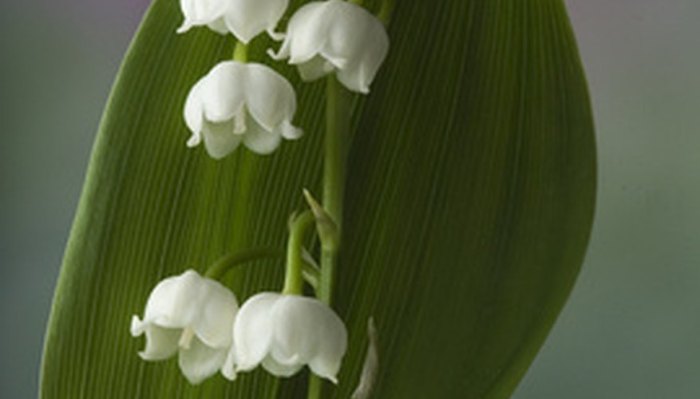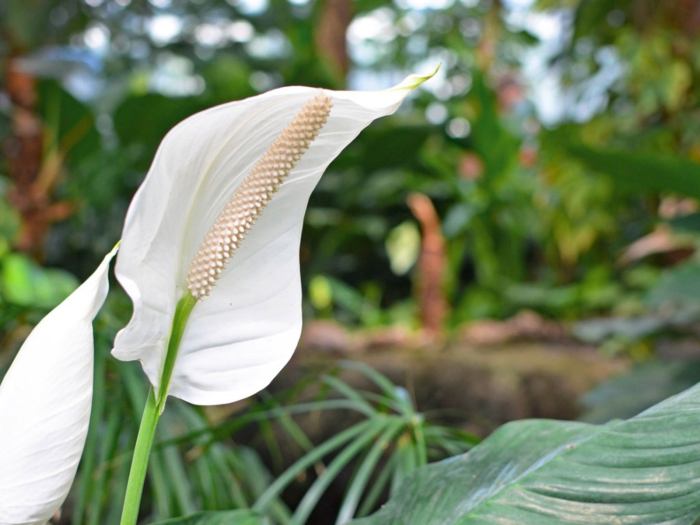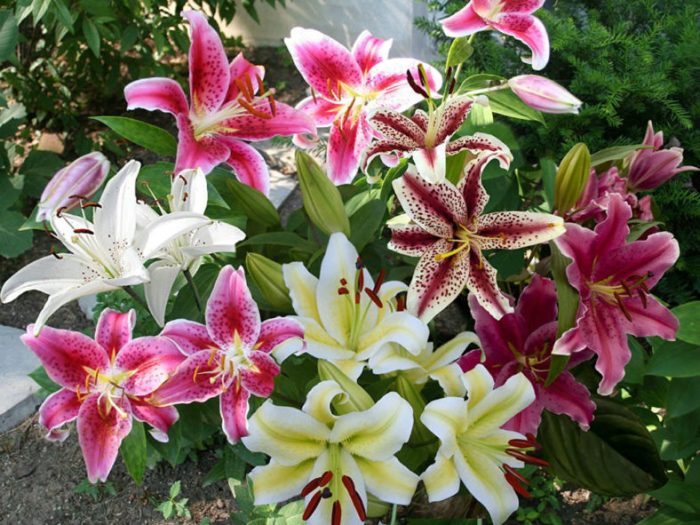How to fertilize lilies – a question that sparks curiosity in every gardener’s mind. These elegant blooms, with their captivating beauty, demand specific care to thrive and produce an abundance of vibrant flowers. Lilies, like any other plant, require a balanced diet of essential nutrients for optimal growth and development.
Understanding their needs is the first step to ensuring their well-being and maximizing their blooming potential.
Fertilizing lilies is an art, not just a chore. It’s about providing them with the right nutrients at the right time, in the right way. This guide will equip you with the knowledge to nourish your lilies, from choosing the perfect fertilizer to mastering application techniques.
Get ready to unlock the secrets of a flourishing lily garden, where vibrant colors and captivating scents dance in the summer breeze.
Understanding Lily Needs

To ensure your lilies thrive and produce stunning blooms, understanding their nutritional requirements is crucial. Just like any other plant, lilies need a balanced diet of essential nutrients to support healthy growth and development.
Essential Nutrients for Lilies
Lilies, like most plants, need a balanced diet of macronutrients and micronutrients. Macronutrients are required in larger amounts and play a vital role in various plant processes.
- Nitrogen (N): Nitrogen is essential for healthy leaf growth and vibrant green foliage. It promotes the production of chlorophyll, the pigment that allows plants to photosynthesize and produce energy.
- Phosphorus (P): Phosphorus is crucial for strong root development, flowering, and seed production. It plays a vital role in energy transfer within the plant, contributing to robust growth and vibrant blooms.
- Potassium (K): Potassium is vital for overall plant health and disease resistance. It helps regulate water movement within the plant, improves nutrient uptake, and strengthens the stems, ensuring they can support the weight of the beautiful blooms.
Choosing the Right Fertilizer

Fertilizing your lilies is essential for their healthy growth and vibrant blooms. But with so many options available, choosing the right fertilizer can feel overwhelming. Let’s break down the different types of fertilizers, their pros and cons, and how to select the best one for your lilies at different stages of their life cycle.
Types of Fertilizers for Lilies
There are two main categories of fertilizers: organic and synthetic. Understanding the key differences between these types can help you make an informed choice.
Fertilizing lilies is essential for their vibrant blooms, but knowing the right balance of nutrients can be tricky. Luckily, the world of ai in gardening is offering solutions! AI-powered apps can analyze soil conditions and recommend personalized fertilizer plans, taking the guesswork out of keeping your lilies thriving.
- Organic Fertilizers:These are derived from natural sources like compost, manure, and bone meal. They release nutrients gradually, providing a steady supply over time. Organic fertilizers also improve soil structure and promote beneficial microbial activity.
- Synthetic Fertilizers:These are manufactured from chemical compounds and contain specific ratios of nitrogen (N), phosphorus (P), and potassium (K), the three essential nutrients for plant growth.
They provide a quick burst of nutrients, but their effects may be short-lived.
Choosing the Right Fertilizer Based on Lily Growth Stage
The type of fertilizer you choose should align with your lilies’ current stage of growth.
- Planting:When planting lilies, a slow-release granular fertilizer is ideal. This provides a sustained supply of nutrients as the bulbs establish roots.
- Blooming:During the blooming stage, lilies require more phosphorus to support flower development. A balanced fertilizer with a higher phosphorus content (e.g., 10-20-10) can be applied every 2-3 weeks.
- Dormant:During the dormant period, lilies don’t need fertilization. The focus should be on protecting the bulbs from harsh winter conditions.
Benefits and Drawbacks of Slow-Release Fertilizers
Slow-release fertilizers, whether organic or synthetic, offer several advantages for lilies:
- Gradual Nutrient Release:They provide a consistent supply of nutrients over an extended period, reducing the risk of nutrient burn or over-fertilization.
- Reduced Leaching:They minimize the loss of nutrients through leaching, which occurs when water carries nutrients deep into the soil.
- Improved Soil Health:Some slow-release fertilizers, especially organic ones, contribute to improved soil structure and microbial activity.
However, slow-release fertilizers also have some drawbacks:
- Slower Initial Growth:It may take longer for lilies to show visible signs of growth compared to quick-release fertilizers.
- Cost:Slow-release fertilizers are generally more expensive than quick-release options.
Application Methods

Applying fertilizer to lilies is a crucial step in ensuring their healthy growth and vibrant blooms. The method you choose will depend on the type of fertilizer you’ve selected and your personal preferences. Each method has its own advantages and disadvantages, so it’s essential to understand them to make the best choice for your lilies.
Fertilizing lilies is all about finding the right balance – too much and you risk burning the roots, too little and they might not thrive. I’ve found that a balanced liquid fertilizer diluted to half strength works well for my lilies, but I’ve also learned that monsteras are quite different! If you’re looking for tips on how to properly fertilize a monstera, check out this great resource on how to fertilize a monstera.
Once you’ve got the hang of that, you can apply the same principles to your lilies, just remember to adjust the fertilizer type and concentration based on your specific lily variety.
Granular Fertilizer Application
Granular fertilizers are readily available and easy to use. They are typically applied around the base of the lily plant, ensuring the granules are spread evenly.
- Step 1:Carefully remove any weeds or debris around the lily plant. This ensures the fertilizer reaches the soil directly.
- Step 2:Sprinkle the granular fertilizer evenly around the base of the lily plant, ensuring it does not touch the stem or leaves.
- Step 3:Gently water the soil to help the fertilizer dissolve and penetrate the soil.
The granules release nutrients gradually over time, providing a consistent supply to the lilies.
Liquid Fertilizer Application
Liquid fertilizers offer a quick and efficient way to deliver nutrients to your lilies. They are typically diluted with water and applied directly to the soil or foliage.
- Step 1:Prepare the fertilizer solution according to the manufacturer’s instructions.
- Step 2:Apply the solution directly to the soil around the base of the lily plant, avoiding contact with the leaves and stems.
- Step 3:Water the lilies thoroughly to ensure the fertilizer solution is absorbed into the soil.
Liquid fertilizers can be applied more frequently than granular fertilizers, providing a more immediate boost to the lilies.
Slow-Release Fertilizer Application
Slow-release fertilizers are designed to release nutrients gradually over an extended period, minimizing the need for frequent applications.
- Step 1:Apply the slow-release fertilizer granules around the base of the lily plant, following the manufacturer’s instructions for dosage.
- Step 2:Water the soil thoroughly to help the fertilizer dissolve and penetrate the soil.
Slow-release fertilizers are ideal for busy gardeners as they require less maintenance compared to other types.
Comparison of Application Methods
| Method | Advantages | Disadvantages |
|---|---|---|
| Granular | Easy to apply, readily available, provides consistent nutrient release. | May take longer to see results, can be difficult to apply evenly. |
| Liquid | Quick and efficient, can be applied more frequently, provides immediate nutrient boost. | Requires more frequent application, can be more expensive. |
| Slow-Release | Minimizes the need for frequent application, provides long-lasting nutrient release. | May be more expensive, can be less effective in extreme temperatures. |
Signs of Nutrient Deficiency: How To Fertilize Lilies

Lilies, like any other plant, rely on a balanced diet of essential nutrients to thrive. When these nutrients are lacking, lilies may exhibit various symptoms that signal a nutritional imbalance. Recognizing these signs is crucial for addressing the issue and restoring your lilies to health.
Identifying Nutrient Deficiencies
Recognizing the specific nutrient deficiency is key to providing the right remedy. Each nutrient plays a unique role in the lily’s growth and development, and its absence can manifest in distinct visual cues.
Common Nutrient Deficiencies and Their Symptoms
The following table summarizes common nutrient deficiencies in lilies and their corresponding symptoms:
| Nutrient | Symptoms |
|---|---|
| Nitrogen (N) |
|
| Phosphorus (P) |
|
| Potassium (K) |
|
| Magnesium (Mg) |
|
| Calcium (Ca) |
|
| Iron (Fe) |
|
| Manganese (Mn) |
|
| Zinc (Zn) |
|
| Copper (Cu) |
|
| Boron (B) |
|
| Molybdenum (Mo) |
|
Fertilizing Tips for Optimal Growth

Optimizing your fertilization strategy is crucial for achieving healthy, vibrant lilies with abundant blooms. This involves understanding your soil’s needs, choosing the right fertilizer, and applying it effectively. But even with the right knowledge, there are some additional tips that can help you maximize your lilies’ growth potential.
Timing and Frequency of Fertilization
The best time to fertilize lilies is during their active growth periods, which are spring and early summer. Fertilizing during these times provides the nutrients they need to produce strong stems and foliage. Here’s a general guideline for fertilizing:
- Early Spring:Apply a balanced fertilizer (e.g., 10-10-10) to encourage strong root development.
- Mid-Spring to Early Summer:As the lilies start to grow, apply a fertilizer that’s higher in phosphorus (e.g., 10-20-10) to support flower bud formation.
- Late Summer:Once the lilies have finished blooming, apply a light fertilizer to help them recover and store energy for the next season.
It’s important to avoid fertilizing during the late summer or fall as this can encourage new growth that may be damaged by frost.
Importance of Soil Testing
Soil testing is essential for determining the specific nutrient levels in your soil and understanding any deficiencies that need to be addressed. A soil test can help you create a customized fertilization plan, ensuring you’re providing the right nutrients in the right amounts.
- Soil pH:Lilies thrive in slightly acidic soil (pH 6.0-6.5). If your soil is too alkaline, adding sulfur or peat moss can help lower the pH.
- Nutrient Levels:Soil tests can reveal if your soil is lacking in essential nutrients like nitrogen, phosphorus, potassium, or magnesium. Based on the test results, you can adjust your fertilizer application to meet your lilies’ specific needs.
Organic Matter Enhancement, How to fertilize lilies
Organic matter, such as compost, manure, or leaf mold, is crucial for improving soil fertility and enhancing lily growth. It helps:
- Improve Drainage:Organic matter improves soil structure, promoting better drainage and aeration.
- Increase Water Retention:It helps the soil retain moisture, preventing the lilies from drying out.
- Release Nutrients Gradually:Organic matter decomposes slowly, releasing nutrients over time, providing a steady supply for your lilies.
- Boost Microbial Activity:It encourages beneficial microbes that help break down nutrients and make them available to the lilies.
Adding a layer of organic matter to the soil around your lilies can significantly improve their overall health and growth.
Last Recap

Fertilizing lilies is a rewarding endeavor, a dance between understanding and action. By following these guidelines, you’ll witness the transformation of your lilies – from delicate sprouts to breathtaking blooms. Remember, it’s not about overwhelming your lilies with nutrients, but about providing them with the essential building blocks they need to flourish.
So, get your hands dirty, observe your lilies, and let their beauty inspire your gardening journey.